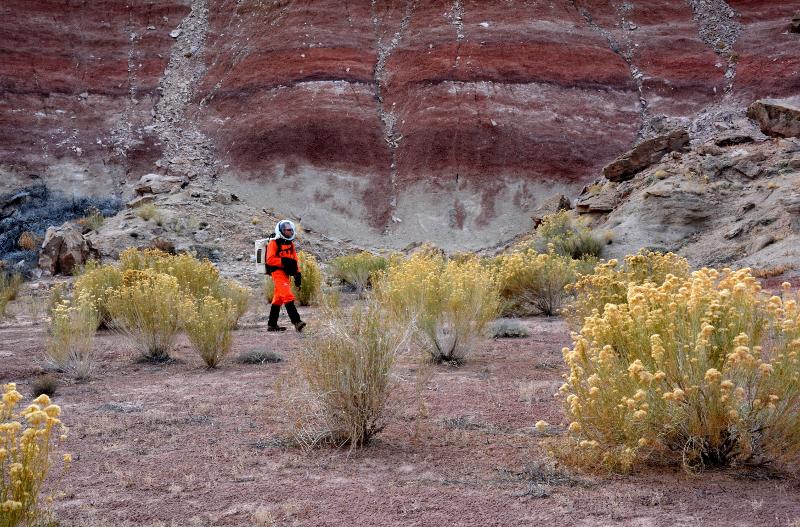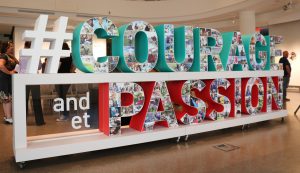
Exploration
Canadian Space Agency astronaut profiles
The men and women that have become part of Canada’s space team
- 1067 words
- 5 minutes
This article is over 5 years old and may contain outdated information.
Science & Tech

With the successful launch of NASA’s Orion spacecraft — the one that will supposedly take astronauts to Mars by the 2030s — it may seem like we are closer than ever to colonizing the Red Planet. Paul Sokoloff knows more about that than most; he recently spent two weeks in the Utah desert carrying out a simulated mission to Mars. But what makes Sokoloff different from most would-be Mars colonists is that he’s not a rocket scientist, an engineer or even a pilot. He’s a botanist.
By day, Sokoloff works at the Canadian Museum of Nature, where he specializes in the study of the plants that are able to survive in the Canadian Arctic Archipelago, the vast collection of islands north of the 60th parallel. In addition to being extremely cold, the area is also a desert, receiving only a few inches of precipitation (mostly snow) each year. In fact, the area is so harsh that it has been used as a training ground for Mars exploration. In 1998 the Mars Society — a US-based not-for-profit that advocates human exploration and settlement of Mars — selected a location on Devon Island, 165 kilometers northeast of the hamlet of Resolute, Nunavut, to be the site of its first Mars Analog Research Station. Since then, over a dozen crews have spent time at the station, from a few weeks to over a month.
Next year, the Mars Society hopes to embark on its most ambitious mission to date: Mars Arctic 365 will see a six-person crew live at the station for a full year. When Sokoloff, a self-professed space nut, saw the call for applicants about a year ago, he simply couldn’t resist. “Not only am I fascinated by space, but I love working in the Arctic; it’s what really motivates my work,” he says, adding that he’s been there four times for plant research. After submitting a research proposal and undergoing a battery of tests and screening — including a psychological evaluation — Sokoloff became one of the 21 finalists for Mars Arctic 365.

But what would a botanist do on Mars, where there are no plants? The main thrust of Sokoloff’s research to identify species that have adapted to extreme environments on Earth and might be hardy enough to serve as the vanguard of a Martian colonizing force. For example, certain types of blue-green algae (properly known as cyanobacteria) contain proteins that protect their DNA from being damaged by strong UV light or other forms of radiation. That would be crucial on a planet with no ozone layer and no magnetic field to turn away charged particles spewed out by the sun.
Before the crew for Mars Arctic 365 can be decided upon, the finalists had one last hurdle: a field test at the Mars Society’s other analogue research station, in the middle of a Utah desert. That’s where Sokoloff found himself two weeks ago, driving very slowly down a bumpy track named Cow Dung Road (you can’t make this stuff up). “You round this hill, and there it is: a big gleaming white cylinder,” he says with awe. “It’s pretty powerful.”
The cylinder — called the habitat, or ‘hab’ — is only 8 metres in diameter. It contains living quarters, a laboratory and an ‘airlock’ in which the crew faithfully observes all the rituals of the simulation. “Some crews take it more seriously than others, but we decided to spend a full 11 days ‘in sim’” says Sokoloff. This means that any EVAs (extra-vehicular activity, or trips outside) have to be approved by mission control, which in this case is a worldwide network of volunteers working with the Mars Society. Communication with mission control is limited to a two-hour window each evening.

Sokoloff carried out a detailed survey of all the plants, lichens, mosses, photosynthetic bacteria and whatever other growing things he could find near the hab. “I was actually surprised to find more plants in that region of desert than there are in the entire Canadian Arctic,” he says. Sokoloff came home with 80 different specimens, all of which will be added to the National Herbarium of Canada. Over the next few weeks, Sokoloff will be comparing the specimens with others in the collection to determine exactly what he’s found.
Sokoloff won’t find out until January whether or not he made the cut for Mars Arctic 365, but either way the experience was one he won’t soon forget.
For more details on Sokoloff’s trip, you can see his own blog posts here, here and here.
Are you passionate about Canadian geography?
You can support Canadian Geographic in 3 ways:

Exploration
The men and women that have become part of Canada’s space team

Science & Tech
Chris Herd is the only Canadian on the Mars rover sample return team

Science & Tech
Courage and Passion: Canadian Women in the Natural Sciences aims to inspire young women to pursue careers in science

History
A trip back in time to the memorial’s dedication